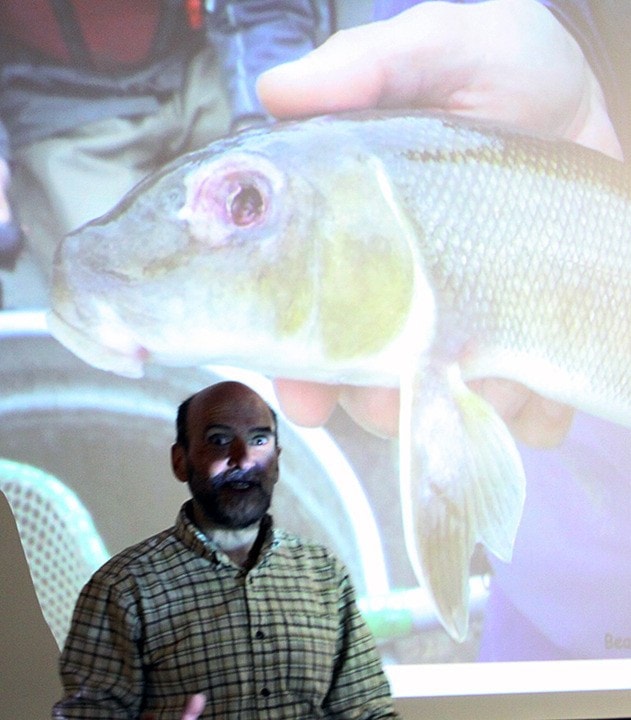It used to be a beautiful, pristine river filled with all kinds of fish and supplying food, water and other things to a whole host of residents.
However, the Battle River has now been left a mere shadow of its former self according to presentation from Dr. Michael Sullivan, a fisheries scientist with the Alberta government. He spoke to a crowd about the subject on March 22 during a World Water Day event - sponsored by the Battle River Watershed Alliance - at the Ponoka Royal Canadian Legion auditorium.
Sullivan, who has worked for the provincial fish and wildlife branch for more than 30 years, focused on how bad a condition the Battle River is in and provided a solution that could help repair the damage that has been done along with maintaining the economic viability of agricultural production.
“What we do on the land affect our fish and rivers,” Sullivan began his presentation.
“The goldeye used to be abundant in the Battle River back in the 1940s. There were fish traps that caught tons of goldeye for people to eat. However, by 1977, people and scientists could see how things had begun to change - the big goldeye runs were gone, the only place to catch any fish was near Forestburg, there were big fish kills at a lake that feeds the river and low oxygen levels in the river.”
Sullivan explained another 30 years went by until another large study, done by him and a few others in the department over three summers from 2007-09, found it wasn’t simply the lack of fish that weren’t there, but how sick the ones that they found were.
The study - done at various sites along a 120 kilometre stretch of the Battle River running from west of Ponoka to the east of Wainwright - found just seven goldeye with six of those caught near Canadian Forces Base Wainwright. Sullivan suspects the better water quality there - due in part to strict environmental regulations at the base - contributed to them finding more fish. About 80 per cent of the fish caught in the study were minnows or white suckers, though most fish were either dead or filled with parasites, tumors, hemorrhages and lesions.
“More than 50 per cent of the river is in really bad shape, but how did this happen?” Sullivan rhetorically asked the crowd.
“It’s the result of unplanned development. Forests and wetlands became fields, shorelines were developed leading to the loss of natural filters, springs and habitats plus loss of groundwater supplies combined with excess nutrients running off in the river.
“And it’s not the family farms a lot of us grew up with, farms now make up less than five per cent of the population yet cattle production has more than doubled to over six million head since 1960.”
He added if you toss in fertilizer sales increasing to about four million tons and 2006 data from Agriculture and Agri-Food Canada showing manure production in the Calgary-Edmonton corridor now exceeds 4,000 kilograms per hectare, “Where do a lot of those nutrients go? Straight into the province’s waterways.”
What’s need to fix the problem, which Sullivan admits can and has been done though in larger rivers, is to bring back the forests and wetlands that act as natural water cleaning filters and lower or eliminate nutrient runoff such as manure and phosphorous as well as begin paying people to help generate clean water and air.
“(These filters) are a double whammy - they clean up the water entering the river and it’s like taking 20,000 cars of the road each year,” he added.
“The solution to get that valuable land is to pay real money for a healthy environment. There is a real cost savings to have clean water, so why not pay farmers for growing clean water through tax breaks or subsidies, give the oil industry compensation and carbon credits, have municipalities zone land for clean water and air producers, offer tax incentives for organic, natural or lighter footprint farming.
“People can still farm and ranch, but pay them for the lost production.We need to change the economics to make this work and improve the water and our lives.”
